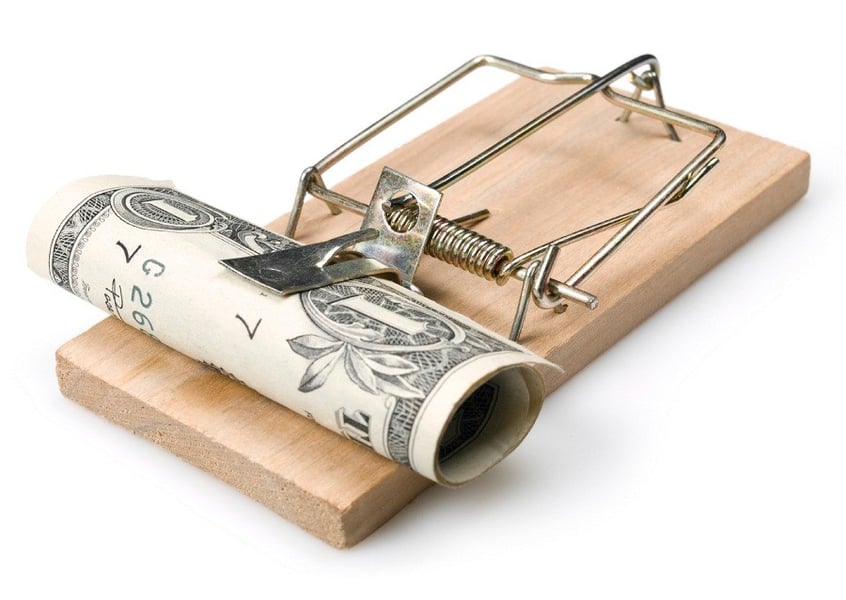Higher interest rates will be a blessing to many retirees looking at CDs and fixed annuities, but that very same prospect is a terrifying one for debtors, particularly those with variable-rate debt.
At the end of February, Federal Reserve Chair Janet Yellen indicated in testimony before the Senate Banking Committee that although the first increase in the key federal funds rate won't take place before June,
the time for a hike is rapidly approaching as economic conditions continue to improve.
For now, financial advisers are monitoring their bond portfolios judiciously,
avoiding any sharp changes in strategy based on the outcome of the Fed's meetings.
Meanwhile, the prospect of rising rates is a
huge worry for people who owe money on a variable-rate debt. The very same low rates that hurt returns on CDs and money market funds are keeping interest rates at rock-bottom levels for variable-rate loans —
and when rates rise, debtors are going to find themselves facing climbing interest rates.
Loans with variable interest rates include home equity lines of credit, private student loans, adjustable-rate mortgages, balloon mortgage loans and credit cards. Anyone making interest-only repayments on a debt will probably have a nasty surprise as rates go up.
“HELOCs have variable rates, and they will absolutely get hit with higher payments [when rates go up],”said Glenn J. Downing, an adviser with CameronDowning in Miami. “That's going to happen: You will absolutely get a higher rate, and there's nothing you can do other than to pay it down.”
PREPARING FOR HIGHER RATES
Ideally, clients with adjustable-rate mortgages decided to refinance at a more favorable fixed rate while interest rates remained low. As for private student loans, which
Sallie Mae says can vary from a 2.25% APR up to a 9.37% APR, the hope is that clients who are still indebted have spent the last few years repaying as much principal as possible.
(Full disclosure: I owe about $30,000 in private student loan debt, which is sitting at a variable interest rate of about 3%. I have budgeted for outsized repayments to go toward principal, especially since rates plummeted during the recession. And yes, I'm meeting my long-term savings goals, too.)
Note that your client needs to make sure that the lender is applying
the excess repayment toward principal and not toward future interest.
Allan Moskowitz, an adviser with Affirmative Wealth Advisors, has two low-income clients who have a HELOC with a balloon payment coming due in three to four years. He has advised those clients to aggressively repay the loan. “I recommended they pay it down as much as they could because in three to four years, it's going to be at a higher rate,” Mr. Moskowitz said.
“If people are able to pay down their debts and refinance, this is the time to do it, before rates go up,” he added.
Advisers are not, however, scaring clients away from taking out new loans right now. “Rates are still very low and attractive,” said Gustavo Vega, managing director at Vega & Oprandi Wealth Partners. “The idea of making substantive changes doesn't seem prudent at this moment.”
But those who are in the process of repaying variable-rate debt and who aren't in a dire situation have a couple of options available. Mr. Vega proposed repaying variable-rate debt as if the interest rates were higher today — budget for a large repayment and make headway on reducing principal. In that manner, when rates ultimately rise, the indebted client will have a smaller balance subject to the higher rates.
Another option: If the debt isn't urgent, the client can use the extra cash that otherwise would have gone toward a large repayment and invest it. “Even if rates don't go up, you have a nest egg,” Mr. Vega said. “If rates do rise, you can aggressively pay down the debt. Now you have options.”
PRIORITIZING DEBTS
There isn't one set way for clients to rein in their debt. “You'll hear people say to start with the smallest balance first. That's a victory,” Mr. Downing said. “Then you take the payment and roll it into the next debt.”
When it comes to dollars and cents, it makes sense to tackle the loan or line of credit with the highest interest rate first, but this could be an issue for clients with thousands of dollars in debt.
“If you're talking about someone who is $20,000 in debt, whether you pay the 12% or the 14% first, it's not going to make a lot of difference,” Mr. Downing said. “So much of this is going to be driven by what the client is most comfortable with.”
Regardless of whether a client decides to stack repayments to eliminate variable-rate debt faster, debt management needs to be built into the client's plan in a way that doesn't interfere with other goals.
“The point for debt management with clients is to not let it tyrannize you,” Mr. Downing said. “Make a plan, make the payments you said you would, don't add to your debt, and enjoy your life and be productive.”







